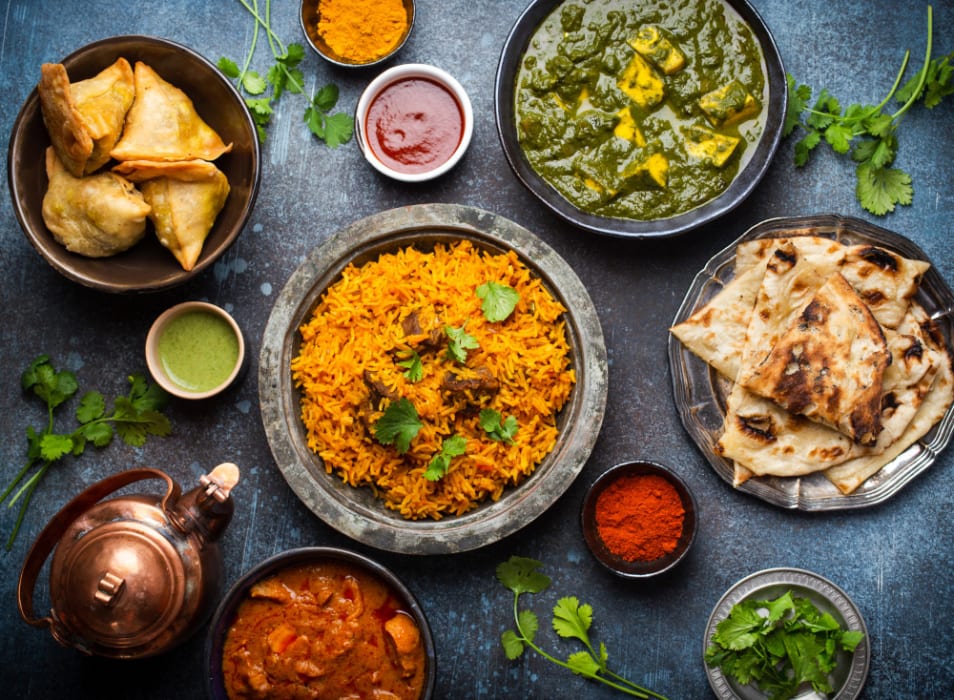Exploring the Spices of India: The Secret Ingredients Behind Our Signature Dishes
When you sit down to enjoy an Indian meal, you're not just tasting food—you're experiencing centuries of culture, history, and tradition distilled into every bite. At Maharaja Tandoori Cuisine in Preston, Melbourne, spices are not merely ingredients—they are the soul of our kitchen. They give our signature dishes their character, complexity, and warmth. In this blog, we explore the essential spices used in Indian cooking and how they bring our dishes to life.
Why Spices Matter in Indian Cuisine
Indian cuisine is known for its depth of flavour, and that comes from thoughtful layering of spices. These aren't random seasonings thrown in for taste—they're carefully chosen for how they interact with each other, and how they support the core ingredients in a dish.
The use of spices is both a science and an art. Some are added for aroma, others for heat, bitterness, or sweetness. Most importantly, Indian cooking uses spices to create balance. A curry is not just spicy; it's warm, aromatic, sometimes tangy, sometimes creamy—but always in harmony.

Core Spices in Indian Kitchens
At Maharaja Tandoori Cuisine, our chefs rely on a consistent palette of spices. Here are some of the most commonly used:
• Cumin (Jeera): Earthy and nutty, cumin is used whole or ground. It often begins a dish, tempered in hot oil to release its aroma.
• Coriander (Dhania): Mild and slightly citrusy, coriander seeds are ground into a powder used in both dry and gravy dishes.
• Turmeric (Haldi): Known for its golden hue and anti-inflammatory properties, turmeric is essential in most curries, giving a mild bitter note.
• Chilli Powder (Lal Mirch): Adds heat and colour. We often use Kashmiri chilli powder, which is milder but offers a rich red hue.
• Fenugreek (Methi): Bitter and slightly sweet, used in leaves or seeds. You'll taste this in our Cream Chicken and Butter Chicken.
• Mustard Seeds (Sarson): Tiny seeds that pop in oil, common in South Indian and Goan-style curries.
• Asafoetida (Hing): Used sparingly, this strong-smelling spice adds an umami depth, particularly in vegetarian dishes.
• Garam Masala: A blend of spices like cardamom, cloves, cinnamon, and black pepper, added at the end of cooking to elevate aroma.
• Cinnamon (Dalchini): Sweet and woody, it's often used in biryanis and slow-cooked meat curries.
• Cardamom (Elaichi): Green cardamom pods add fragrance and are found in both desserts and savoury dishes.
Each spice brings something unique. Used together, they create the layered complexity that defines Indian cuisine.
Spice Profiles of Our Signature Dishes
Let's look at how spices shape some of our most-loved dishes:
Butter Chicken
A customer favourite, this dish is all about balance. The tomato and cream base is infused with cumin, garam masala, dried fenugreek leaves (kasuri methi), and a hint of chilli for warmth. The result? Creamy, mildly spiced comfort food.
Rogan Josh
A slow-cooked lamb dish packed with flavour from cardamom, cinnamon, cloves, and Kashmiri chilli powder. It's rich, aromatic, and traditionally made without cream, allowing the spices to stand out.
Goa Fish Curry
A tangy, coconut-based curry with mustard seeds, curry leaves, turmeric, and chilli. The coastal flavours are enhanced by tamarind and a tempered spice oil poured on top before serving.
Chana Masala
A hearty chickpea curry where coriander, cumin, turmeric, and amchur (dried mango powder) add tang, depth, and warmth. This is a prime example of a vegan dish being just as satisfying as any meat-based option.
Our Unique Offerings: Catering to Diverse Palates
We understand that everyone's dietary needs are different. That's why our menu at Maharaja Tandoori Cuisine includes:
• No Onion, No Garlic Menu: For those observing specific dietary restrictions, we prepare dishes using asafoetida, ginger, and carefully chosen spice blends to create full-bodied flavour without onion or garlic.
• Vegetarian and Vegan-Friendly Options: Many of our dishes, such as our Dal Tadka and Vegetable Jalfrezi, rely heavily on spices for depth, offering satisfying meat-free alternatives.
• Mocktails and Non-Alcoholic Pairings: We offer a refreshing drinks menu designed to complement the spices in our food, cooling your palate and enhancing the experience.
How We Prepare Spices
We don't cut corners. Spices at Maharaja Tandoori Cuisine are freshly ground in-house, often blended to our recipes. Here's how we work with them:
• Dry Roasting: Toasting whole spices before grinding intensifies the flavour.
• Tempering: Heating spices in hot oil or ghee at the start of cooking unlocks their aroma and creates a flavour base.
• Layering: We don't dump all spices in at once. Instead, they're added in stages to build complexity.
Experience Indian Cuisine Beyond the Plate
When you dine with us, you're not just ordering food—you're tasting stories passed down through generations, flavours crafted with intention, and ingredients selected for both their taste and their cultural significance.
Our dishes aren't designed to overwhelm with heat but to showcase spice in its many forms—warming, fragrant, grounding, or bright. Whether you're new to Indian cuisine or a long-time fan, there's always something new to discover in the spice.
Conclusion: A Real Taste of India in Melbourne
At Maharaja Tandoori Cuisine, our commitment to authenticity starts with our spices. From our Butter Chicken to our Goa Fish Curry, every dish is rooted in India's rich culinary tradition and made fresh in our Preston kitchen.
We invite you to experience the best of Indian cuisine in Melbourne—whether it's through a vibrant Bollywood night, a catered event, or simply a quiet dinner with family. Explore our Entrée Veg and Non-Veg, Mains, No Onion No Garlic Menu, Mocktails, and more, all crafted with the perfect blend of spice and care.




Leave a Comment
Comments (0)